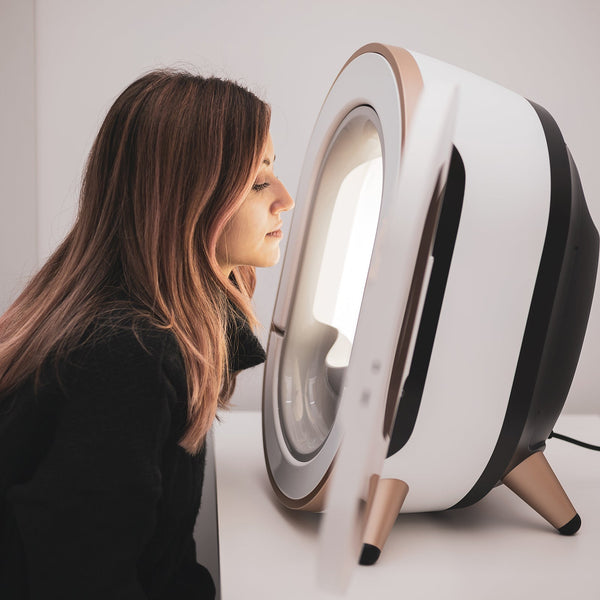Is long-term skin care a replacement for noninvasive, antiaging medical treatments?

As estheticians, we are licensed to work with the integument, treating it according to what we learned in school and what is allowed within our scope of practice. As a practicing esthetician with over 16 years of experience, I have heard my share of skepticism regarding product efficacy and the effectiveness of topical treatments as compared to more invasive modalities. Surprisingly, such skepticism is generally expressed by doctors, who argue that methods such as fillers, lasers, microneedling with RF, and other non-surgical options are the only way to prevent premature aging and reverse existing damage. However, some doctors understand the unequivocal benefits of topical skincare and regular visits to the esthetician, but it seems they are the minority in the profession.
The most popular non-surgical facial aesthetic rejuvenation methods today include an array of fillers such as Juvederm, Restylane, Belotero, Radiesse, and Sculptra. These injectables are formulated to address specific signs of aging like volume loss, and skin sagging, are targeted and provide immediate results, and may last any time from six months to two years. Fillers help improve the appearance of the face by enhancing certain features and making up for lost fat volume.
Sometimes, clients confuse toxins such as Botox, Dysport and Xeomin with facial fillers, but they serve a completely different purpose. Botulinum toxin type A and has been widely used for many years to temporarily reduce the appearance of facial wrinkles and fine lines by relaxing the facial muscles. The effect from this injectable typically lasts up to six months, and is most commonly administered into the frontalis, the temporalis, and the procerus.
There are a variety of non-surgical methods for esthetic rejuvenation used by doctors in addition to fillers and toxins, such as highly complex medical devices available to practices which have a doctor on staff. The use of some medical equipment is regulated and restricted to dermatologists and doctors, due to the potential risks and complexity of the procedures involved. While the specific regulations and scope of practice may vary by state, most frequently, these devices may not be operated by estheticians:
-
High-powered laser devices, particularly those used for ablative and non-ablative skin resurfacing, hair removal, and treatment of vascular lesions.
IPL laser (Intense Pulsed Light) usually gives good results for diminishing redness, fresh hyperpigmentation, and stimulating mild collagen growth. During the treatment, the IPL device sends short, concentrated pulsating beams of light at irregular skin. The light bypasses the epidermis and gently heats the cells in the dermis. The fibroblasts start to produce more collagen, which improves texture and fine wrinkles - the new skin that forms is smoother and firmer. Fractional lasers are newer and treat wrinkles and post-acne scars.
-
Advanced RF devices used for skin tightening, wrinkle reduction, and body contouring are often considered medical devices. This includes the popular Morpheus8 microneedling + RF device.
Radio frequency (RF) is a procedure commonly used for the treatment of skin laxity from an increase in tissue temperature. This is an anti-aging modality that produces a selective and controlled rise in tissue temperature from a high frequency alternating current (0.3 to 10 MHz). The rising of temperature and the depth of heating depend on the level of energy used and on the impedance of biological tissues. The goal is to induce thermal damage to thus stimulate neocollagenesis in deep layers of the skin and subcutaneous tissue. After a series of treatments, the facial skin in the treated areas appears more firm and tight. One of the most popular forms of radio frequency skin rejuvenation is Thermage, the other is Morpheus8, an RF device with integrated needling. Morpheus8 uses a matrix of micro-pins, which are fine needles that are inserted into the skin. These micro-pins create micro-injuries to stimulate the body's natural healing response and promote collagen and elastin production. In addition to microneedling, Morpheus8 delivers RF energy into the deeper layers of the skin. The combination of microneedling and RF helps to tighten and remodel the skin by stimulating collagen production.
-
Medical microneedling procedures that use longer needles, often ranging from 1.5 to 3 mm in length, including microneedling with Platelet-Rich Plasma (PRP).
As mentioned above, microneedling, or collagen induction therapy, is an excellent way to stimulate new collagen and elastin production. It is also one of the best ways to treat scarring, including acne scars, pitting, uneven texture, and stretch marks, especially when performed at a more significant depth. This type of treatment, although effective, is not in our scope as estheticians in many states, and is often performed by medical professionals.
When reviewing some of the non-surgical anti-aging treatment options, one can’t help but recognize how distinct they are in their nature, and how difficult it is to try to compare them to topical skincare. And why should we compare? Long-term skin care and noninvasive, anti-aging medical treatments like fillers and Botox serve different purposes and can complement each other rather than being direct replacements. Long-term skin care focuses on maintaining overall skin health through visiting a licensed esthetician, maintaining a comprehensive skincare routine, regularly applying sunscreen, and using products that contain ingredients like retinoids, antioxidants, peptides and humectants. Long-term skin care helps maintain skin health and prevent further damage, while noninvasive medical treatments offer more immediate and targeted solutions for specific concerns. While not all of our clients will go the route of adding non-surgical medical treatments to their skin care regiments, most will use the suggested home care and return for regular facials once every 3-4 weeks. Treating the skin with nutrient-rich skincare products and protecting it with sunscreen are non-negotiable.









